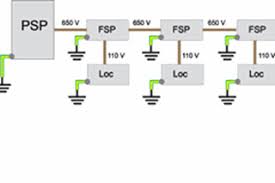Railways Signalling Equipment Power Calculations
Supply to different functions vary according to the type of signaling and type of equipments used .
For example, signal heads may be fed at 110/12 V AC, 12 V DC, or maybe of LED type.
Normally, the input to signaling installations will be of 650Volts which is stepped down and distributed as per requirements. Standard equipment like 650/110V transformer of different ratings, 110/24V T/Js, 110/12V T/Js
etc are to be installed in the R/Rooms and field locations for signaling purposes. Besides, there may be items like Location lamps, heaters etc which are to be fed from the power source available in the location.
Where the production of designs for a new installation is involved, the total power requirement may be calculated by taking the maximum possible load of each function into consideration. For example, the maximum load of a four aspect signal is taken as two lamps lit at a time (double yellow).
The capacity of the feeding source (transformer, T/J etc) is arrived at by taking the load of all the equipment proposed to be connected to it.
Power calculation of existing installation undergoing alterations needs to be done in two steps:
Calculation of the existing load
Calculation of the additional load
Arrive at the final figure of load by adding items 1 & 2 and check if the existing Transformer / T/J can meet the additional requirement. If the total final load does not exceed 90% of the capacity, the feeding equipment can be retained, and if not it stands for replacement.
A typical Power Calculation sheet of EY1 R/R is provided for reference.
Load Calculations, Railways Signalling Equipment Power Calculations, Calculation of the existing load, Calculation of the additional load
